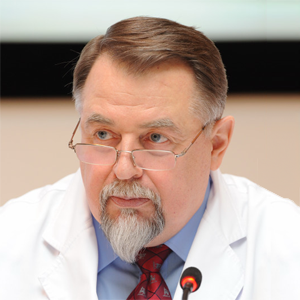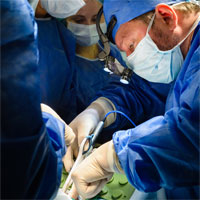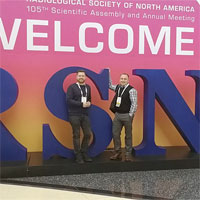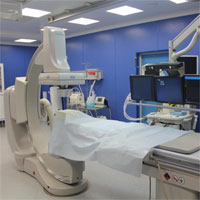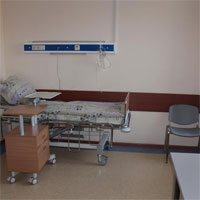Included in the St. George Clinic of Thoracic and Cardiovascular Surgery.
Chief of the department: Maslennikov Mikhail Andreevich, cardiovascular surgeon, doctor for endovascular diagnosis and treatment, Ph.D., assistant professor.
In the Pirogov National Medical and Surgical Center successfully operates the department of
The department includes several
The staff of the department includes 6 doctors-specialists in x-ray-endovascular methods of diagnosis and treatment (2 doctors and 4 candidates of medical sciences), 3 cardiologists and a neurologist.
The main directions of the department’s work
Diseases of the heart vessels:
- Coronary angiography, coronaroventriculography, coronaroscintography;
- Balloon angioplasty and stenting of the coronary arteries of the heart.
Most surgical interventions are performed by transradial (through the radial artery) access.
Particular attention is paid to the problems of destabilization of the course of coronary heart disease (acute coronary syndrome), the return of angina pectoris in patients with previously performed surgical correction of coronary blood flow (aorto-coronary bypass) and complex bifurcation lesions of the coronary arteries of the heart.
In our Center we use endovascular technologies for the restoration of fully occluded coronary arteries of the heart, which allow avoiding cardiosurgical intervention: a system of radiofrequency controlled ablation of atherosclerotic plaque SafeCross (USA) and retrograde recanalization of chronic occlusions.
Diseases of the arteries of the lower extremities:
- Angiography of lower limb arteries;
- Balloon angioplasty and stenting of lower limb arteries;
- Embolization of arterio-venous malformations;
- Installation of a stent-graft in the aneurysm of the iliac arteries.
Diseases of the veins of the lower extremities:
- Phlebography;
- Caviography of the inferior vena cava;
- Restoration of patency of chronically occluded veins by using the innovative rotational excisional thrombectomy system in patients with posttrombophlebitic disease;
- Stenting pathologically altered veins in patients with posttrombophlebitic disease.
Acute venous thrombosis and prevention of thromboembolism of the pulmonary artery:
- Phlebography of veins of lower and upper extremities;
- Phlebography of the lower and upper hollow veins;
- Installation of temporary or permanent cava filter;
- Restoration of patency of occluded veins by using the innovative system Aspirex (Straub) in patients with acute venous thrombosis.
Vascular diseases of the brain:
- Multiple-projection cerebral angiography;
- Stenting of carotid arteries and vertebral arteries;
- Embolization of aneurysms of the intracranial parts of the carotid and vertebral arteries;
- Embolization of intracranial arterio-venous malformations;
- Embolization of carotid-cavernous anastomosis.
Neoplasms:
- Selective embolization of blood vessels in benign and malignant neoplasms of the liver and kidneys;
- Chemoembolization of blood vessels in malignant neoplasms and metastatic liver damage;
- Selective embolization of uterine arteries.
Hypertensive disease and symptomatic arterial hypertension:
- Selective angiography of the renal arteries for the exclusion of occlusive-stenotic lesions of the renal arteries;
- Selective blood sampling from the adrenal veins to exclude primary hyperaldehistonism and pheochromocytoma;
- Stenting of the renal arteries;
- Denervation of the renal arteries.
Aneurysm of thoracic or abdominal aorta, iliac arteries:
- Aortography;
- Endoprosthetics of the aorta.
Patients in need of
In the postoperative period, patients are observed in a modernly equipped intensive care unit for 1 day.
Contact Information
Address: 105203, Moscow, Nizhnyaya Pervomayskaya str., 70
Contact phone number:
Fax:
How to reach us by using public transport
“Pervomaiskaya” metro station (last carriage of the train out of the city centre). From “Pervomaiskaya” metro station by any tram or trolley bus go to the stop “15th Parkovaya Street”. Go along the 15th Park Street to the intersection with the Nizhnyaya Pervomaiskaya Street, turn left and walk about a hundred meters to the entrance of the Pirogov National Medical and Surgical Center.







